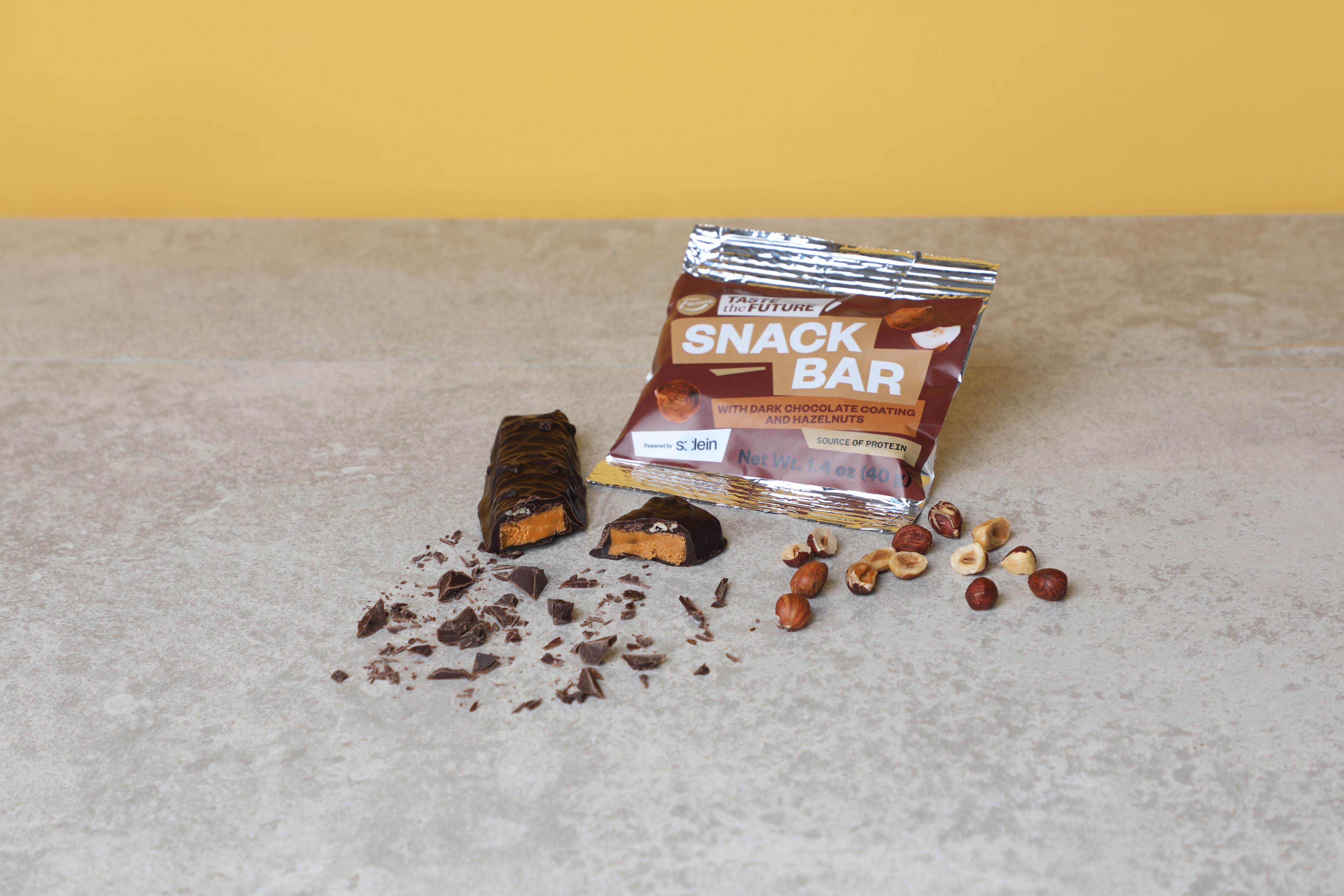Fazer Confectionery, a Finnish food brand, has launched a chocolate snack bar using its novel ingredient, Solein. Solar Foods, a Finnish food technology company, produces the ingredient.
The brand develops it through a fermentation process that uses air and electricity as its main resources. Solar Foods aims to tackle global food availability challenges by producing protein from air, reducing resource use and environmental impact.
Fazer’s Taste the Future 40g chocolate snack bar with dark chocolate coating and hazelnuts contains 7% Solein. Through its fermentation process, the brand aims to provide consumers with a highly functional, nutritious and versatile ingredient that enriches the sweet treat’s flavours and makes the bar a source of protein.
Bioprocesses produce protein ‘out of thin air’
Solein originates from a natural, unmodified, single-cell organism. Rather than watering and fertilising the organism, Solein uses a fermentation process that uses air and electricity as its primary resources.
How do you ferment a new ingredient using only energy and air?
1. Capture key elements from air
Air contains carbon dioxide (CO₂), nitrogen, and oxygen. These elements are captured and fed into a bioreactor.
2. Add water and nutrients
The bioreactor also contains water, mineral nutrients (like phosphorus, potassium, and magnesium), and hydrogen.
3. Use renewable energy to split water
Through a process called electrolysis, renewable electricity (from solar or wind) is used to split water (H₂O) into hydrogen and oxygen. The hydrogen becomes the energy source for the microbes.
4. Feed the microbes
Specially selected microorganisms (like soil bacteria) “eat” the carbon dioxide and hydrogen, using them to grow and multiply—just like how yeast ferments sugars to make beer or bread.
5. Harvest the microbial biomass
As the microbes grow, they create a protein-rich biomass. This is then dried into a powder that's rich in protein, vitamins, and other nutrients.
With available land sparse and requiring additional resources that put a strain on the environment, Solar Foods sought to find an alternative method to cultivate its ingredient, which Fazer Confectionery now uses in its chocolate bars. Solein is, therefore, grown without agriculture. As a result, Fazer Confectionery states it needs a small amount of land, water and energy compared to animal or plant production.
Fazer Confectionery has designed Solein to be a nutritionally rich ingredient offering taste and visual profiles for various applications. Hailed as a diverse protein ingredient, Solein provides iron and vitamin B12. “It is unparalleled in its functionality – it can be used in any food, regardless of diet,” says Anttila.
“Solein provides superior nutrition with great taste, ticks off all major ‘free from’ claims, and is one of the most sustainable proteins in the market,” says Juan Manuel Benitez-Garcia, Chief Commercial Officer at Solar Foods. The brand states it is on track to receive the European Union’s novel food approval for Solein in 2026.
Air’s impact on taste and texture
While its perceived benefits are rooted in sustainability, novel technologies, and meeting consumer demands, confectionery shoppers want a product that tastes good and has an appealing texture. “Product taste and texture are key when developing delicious taste experiences for consumers,” Heli Anttila, VP of New Product Development at Fazer Confectionery, confirms.
Each raw material has its role in Fazer Confectionery’s recipe, and the brand puts limitations on how much they can add to each of them to reach a finished product with an attractive taste. Solein protein has been designed to have a mild and pleasant taste profile.
Marrying technology with consumer feedback
Fazer is the largest shareholder and research and development collaborator for Solar Foods. “We are developing and testing our future products under the Fazer Taste the Future concept,” says Heli Anttila, VP of New Product Development at Fazer Confectionery. The brand’s approach involves developing products, pilot selling them to consumers and then collecting feedback to create their products further. “Collaboration with consumers is key to developing delicious solutions for consumers’ needs and taste preferences,” she notes.
A protein revolution in chocolate?
Adding sweet protein sources to formulations is a key way brands tap into the functional confectionery trend. A 2024 research study by the Institute of Food Technologists found that consumers’ perceptions of protein are based on it providing naturalness, satiety and taste.
Fazer Confectionery has spotted growing consumer demand for healthier and more nutritious food options. “Consumers are increasingly seeking products that offer greater nutritional value without compromising on taste,” says Anttila.




